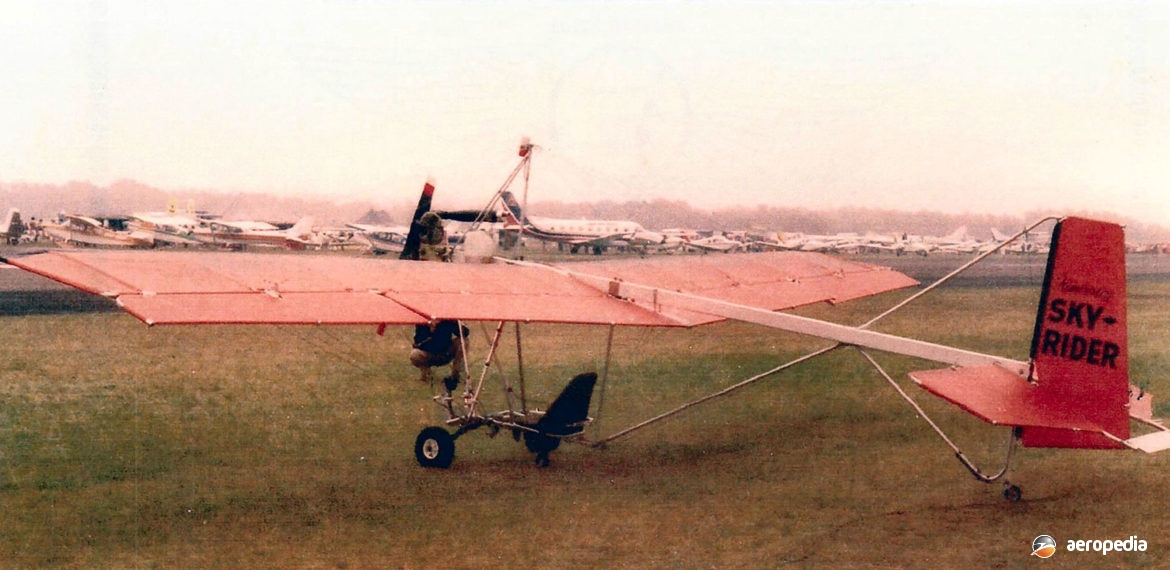Photograph:
The prototype Kimberley Sky-Rider at Schofields, NSW (unknown)
Country of origin:
Australia
Description:
Single-seat ultralight monoplane
Power Plant:
One 11 kw (15 hp) Fuji Robin two-stroke air-cooled engine
Specifications:
- Wingspan: 9.8 m (32 ft 4 in)
- Length: 5.48 m (18 ft)
- Height: 2.4 m (7 ft 10 in)
- Wing area: 13.4 m² (144 sq ft)
- Cruising speed: 64 km/h (40 mph)
- Stalling speed: 37 km/h (23 mph)
- Take-off run: 75 m (246 ft)
- Landing run: 50 m (164 ft)
- Rate of climb: 46 m/min (150 ft/min)
- Endurance: 45 mins
- Empty weight: 88 kg (195 lb)
- Loaded weight: 181 kg (400 lb)
History:
The Sky-Rider was an ultralight aircraft designed by Gareth Kimberley in 1978, he at that time being employed by Qantas as a Boeing 747 Captain and having an interest in hang gliding.
The Sky-Rider was a single-seat, wire-braced, high-wing monoplane with an aluminium tube fuselage and a single wing, the surfaces of which were covered with Dacron sailcloth. For the design he received an outstanding individual achievement award from the Experimental Aircraft Association (EAA) of the United States.
The aircraft was designed to meet the newly promulgated by ANO 95.10, this regulation being introduced at the request of Ronald Wheeler, designer of the Wheeler Scout. Australia was the first country in the world to legislate for the operation of powered hang gliders and minimum aircraft.
Plans for the design were made available and examples were built in a number of countries. Regulation 95.10 specified a max take-off weight of 181 kg (400 lb) and a max wing loading of 4 lb/sq ft.
The basic conventional configuration of the aircraft allowed it to be fitted with a variety of engines and propeller sizes, and the design allowed large variations in pilot weight with little or no change in the aircraft’s trim. Although classified in the powered hang-glider category, the aircraft had the controls and handling characteristics of a conventional light aircraft. It could be dismantled and folded for carriage on the roof of a car or for storage in a garage.
Early test flights took place in the St Marys area west of Sydney, NSW. Power was initially provided by a modified McCulloch two-stroke engine of 8.9 kw (12 hp) but eventually the Fuji Robin series engine of 11 kw (15 hp) was installed. The prototype has survived and has been placed on display at the Powerhouse Museum in Sydney.

